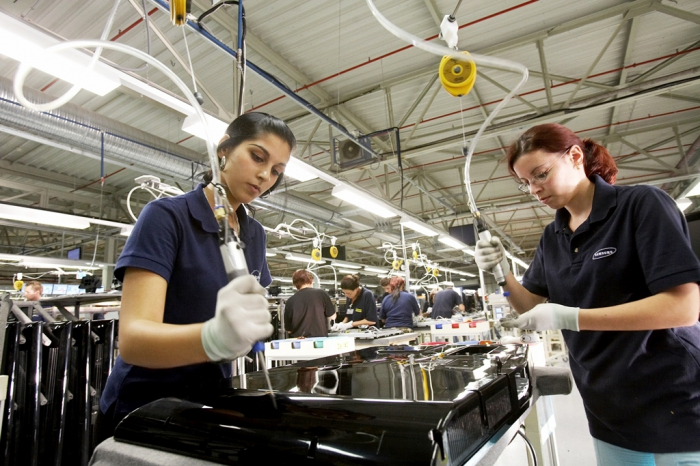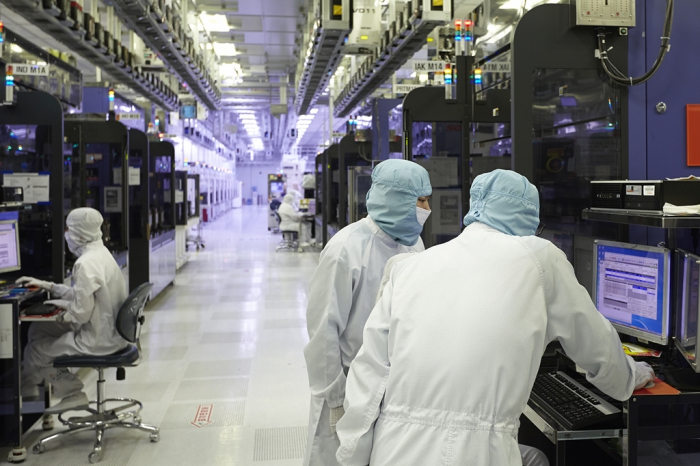Corporate investment
Korea Inc. cuts factory runs, capex on record inventory
Top 50 companiesŌĆÖ inventory assets jump 53% to all-time high in Q2 on sluggish demand, increasing inventory valuation losses
By Aug 18, 2022 (Gmt+09:00)
4
Min read
Most Read
S.Korea's LS Materials set to boost earnings ahead of IPO process


CarlyleŌĆÖs Rubenstein sees commercial real estate undervalued


Samsung Electronics' key M&A man returns; big deals in the offing


Money pours in for technology to reshape Korean restaurants


CJ CheilJedang to sell feed, livestock unit for $1.4 bn



Samsung Electronics Co. and other major South Korean companies have reduced their plant operations and capital expenditures as weakening demand amid a global economic slowdown pushed their inventory to record levels.
Samsung, the worldŌĆÖs top maker of smartphones and memory chips, cut the operating rate of its mobile phone factories to 70.2% in the second quarter from 81% in the first, while lowering the operating rate of plants for video devices such as TVs to 63.7% from 84.3%.
Its rival LG Electronics Inc. also reduced runs at production lines for some home appliances with operations at washing machine plants down to 81% from 99% during the period.
That came as the countryŌĆÖs major companiesŌĆÖ inventory assets hit record-high levels. The top 50 listed companies by market capitalization excluding financial institutes and state-run firms held a total of 219 trillion won ($165.6 billion) in inventory assets as of the end of the second quarter, up 53.1% from a year earlier, according to The Korea Economic DailyŌĆÖs analysis of their earnings reports. That compares with 193.7 trillion won in the first quarter.
SamsungŌĆÖs inventory assets surged 55% to 52.1 trillion won as of June 30 on-year, while those of SK Innovation Co. more than doubled to 13.3 trillion won. SK Hynix Inc. reported a 90.8% surge in assets and POSCO Holdings Inc. logged a 57.2% jump. LG Chem Ltd. saw a 63.4% increase.
Inventory assets include complete products, half-finished products, goods-in-process and raw materials. The value of those assets often increases when weak demand hurts sales or rising commodity prices increase the valuations of existing raw materials.
SamsungŌĆÖs inventory growth was led by complete products, stock of which rose 43.1%. Its semiconductor unit reported 30.7% inventory growth, while the smartphone, TV & home appliance division saw a 21.3% rise. Inventories of its display business increased by 21.8%.
INVENTORY VALUATION LOSSES
Rising inventories often not only raise management and operation costs but also cause valuation losses. Samsung reported an inventory valuation loss of 1.9 trillion won in the second quarter, more than triple the 591.3 billion won a year earlier. Its provision for loss on inventory valuation more than doubled to 3 trillion won from the 1.4 trillion won in the same period of 2021.
ŌĆ£Samsung erased its operating profit by as much as the inventory valuation loss reflected during the quarter in the book,ŌĆØ said an industry source.
POSCO HoldingsŌĆÖ inventory valuation loss also trebled to 114.9 billion won, while Samsung Biologics Co., LG Chem and S-Oil Corp. suffered surges in inventory valuation losses.
Some companies reported record earnings in the second quarter, but investors should look at the details of their profits given such shortfalls, critics pointed out. Inventory assets and credits raised account receivables, keeping cash earned through operations from increasing as much as expected.
The countryŌĆÖs top 50 companies reported total operating profit of 89.7 trillion won in the first half, up 35.7%. But their operating cash flow, a measure of the amount of cash generated by a company's normal business operations, rose only 1.6% to 73.5 trillion won.
FALLING INVESTMENTS
Increasing inventory assets on fears over a global economic recession are expected to slash corporate investments in facilities.
That could create a vicious cycle in South Korea of falling investments reducing employment and household income, which will eventually hurt domestic demand in AsiaŌĆÖs fourth-largest economy.
ŌĆ£Rising inventory valuation losses will affect both investment and production,ŌĆØ another industry source said.
Samsung invested 20.3 trillion won in facilities during the first half, down 13.1% from the January-June 2021 period.
The tech giant plans to take a ŌĆ£flexibleŌĆØ stance on future capital expenditures, its executive said last month in an earnings call.

SK Hynix, the worldŌĆÖs second-largest memory chipmaker, also said it is considering various factors in next yearŌĆÖs investments, given increasing semiconductor inventories.
The company has decided to hold off on a 4.3 trillion won plan to build a new┬ĀNAND chip factory┬Āamid growing global uncertainty and falling chip prices.
The Bank of Korea expected capital expenditures this year to fall by 1.5%, far weaker than 8.3% growth in 2021. The central bank estimated the investment already declined 5.4% in the first half.
Write to Kyung-Min Kang at kkm1026@hankyung.com
Jongwoo Cheon edited this article.
More to Read
-

-
 Korean chipmakersSK Hynix puts $3.3 billion factory plan on hold amid global uncertainty
Korean chipmakersSK Hynix puts $3.3 billion factory plan on hold amid global uncertaintyJul 20, 2022 (Gmt+09:00)
2 Min read -
 EconomyKorea faces risk from record $114 bn in inventory assets
EconomyKorea faces risk from record $114 bn in inventory assetsJul 06, 2022 (Gmt+09:00)
4 Min read
Comment 0
LOG IN


